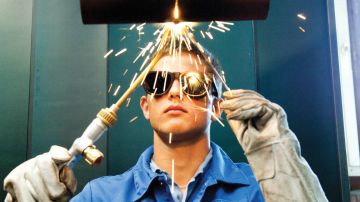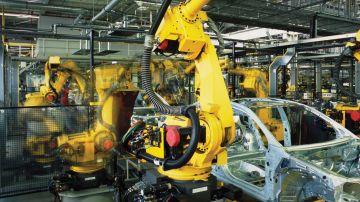Finding people who understand a company’s ethos is key to any organisation that wants to grow and prosper in today’s competitive world. But sometimes, that’s not as easy as it sounds. INEOS, though, has always viewed a problem as an opportunity to improve, which is why its search for the best starts early.
People can make – or break – an organisation or a situation.
One only has to look at the incident where the captain of the Costa Concordia allegedly abandoned his ship, leaving his passengers and crew to fend for themselves after his cruise liner crashed into rocks off the Italian coast and capsized.
It’s why finding people who, not only understand your company’s ethos, but practise it by example, is vital.
That is why INEOS constantly takes steps to ensure a continuous supply of highly-skilled, highly-disciplined and motivated employees who acknowledge their responsibilities and are prepared to leave nothing to chance.
And the search starts early. In primary schools, colleges and science fairs.
“We are continually seeking new candidates and training our own people,” said Patrick Giefers, site manager at INEOS Köln.
The reason is simple: INEOS knows it pays to invest in the best. It is an approach that is recognised by potential candidates in and around the Köln site.
Andreas Hain, head of apprentice training at the German site, said every year 2,000 young people apply for about 60 jobs.
“Our apprentice scheme is very successful and we have no problem filling those jobs with very good quality people,” he said.
“We can focus on what we need, the professions we need and the personality of people we would like to have in the company,” he said.
In Germany, it works.
In the UK, though, there is still a shortage of suitably qualified young people keen to pursue a career in the petrochemicals industry.
“There is never a shortage of applications for apprenticeships in towns where INEOS operates,” said Tom Crotty, Director INEOS Group.
“It’s very easy. Families have grown up working there and know it is a sound company that provides a good source of income so we are flooded with applications.”
The problem – recently identified by Hans Niederberger, the man who used to run the plant in Köln – is the calibre of British students.
“He found there was a world of difference in the quality of the young engineers,” said Tom. “They were academically bright but lacked the practical skills necessary for the job.”
To bridge that gap – and to satisfy the demand for young skilled workers at the Grangemouth refinery in Scotland – INEOS has joined forces with Forth Valley College and Heriot Watt University.
Together they have launched ‘Engineers of the Future’, a five-year modern apprenticeship scheme that gives each student a full university education plus substantial and, more importantly, relevant work experience.
“It creates a work-ready person when they leave university as opposed to the traditional route where really the industry learning starts from day one,” said Gordon Grant, CEO INEOS Grangemouth services and infrastructure.
He said the skills gap – identified by INEOS – was not unique to INEOS.
“It is a shortage that we see across the whole of the petrochemical industry and, in fact, the technology industries throughout the UK,” he said.
He said he had been working closely with the Scottish Government and skills development agency to promote the INEOS model.
“It is one they should be considering for other industries and promoting the benefits of it,” he said.
“For this model of combining university and college education with workplace experience is something that has advantages for everyone involved.” Of course, the concept of work experience placements, as part of a university education, is nothing new.
But what sets this apart is the thinking behind it.
“To have stopped and thought about what experience individuals get, and link it directly into their classroom learning throughout the programme is quite innovative,” said Robin Westacott, director of the Engineers of the Future programme.
Forth Valley College runs two programmes. One is vocational; the other is academic.
In addition, college lecturers also explore INEOS’ values, especially on safety.
“We want them to understand INEOS’ culture so that when they go down to the site to do their on-site training, that culture is already embedded,” said Kenny MacInnes, deputy head of engineering at Forth Valley College.
The students are equally as enthusiastic about the programme as INEOS.
“You get paid on the job, you get the hands-on skills that people at university don’t get and you also get experience on the site as well,” said one.
Another loved the fact that he already had an edge over his peers even before he had graduated.
“You already know a lot more than a typical graduate,” he said.
And that is its aim.
“Hopefully we will see more and more of these schemes coming into place for technology industries to produce a high calibre workforce for the future,” said Gordon.



















